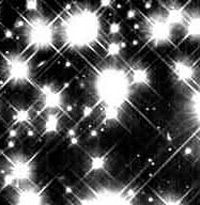Key Takeaways:
Ultra-cool white dwarfs, or white dwarfs with surface temperatures below 4,000 kelvins, are a rare breed. Only seven of these peculiar stars were known to exist, until now. Christian Wolf of the University of Oxford serendipitously discovered an eighth specimen.
White dwarfs are expired stars that no longer generate energy through nuclear reactions. Therefore, they are cool and dim. Ultra-cool white dwarfs, however, are much cooler and fainter than even the coldest regular white dwarf, making them nearly impossible to detect. Their extremely low temperatures suggest they somehow cooled faster than their normal counterparts.
Which mechanism could cause ultra-cool white dwarfs to cool so quickly is still unknown, but scientists believe it might be key to understanding how early stars in the galaxy formed and died.
Research revealed the colors were similar to those of ultra-cool white dwarfs. Also like those stars, this star’s spectrum was featureless. It is the faintest ultra-cool white dwarf yet found — and perhaps the most distant.
Unfortunately, the lack of spectral features means little can be determined about the star’s physical properties. The composition of the dwarf, the number of companions it has, and even its mass cannot be calculated without spectral features. “At this stage, we are still in the realm of complete speculation,” states Wolf. “We can only rule out certain scenarios.”
The only easily measurable trait is the star’s parallax, which would yield its luminosity. But even that might not help. A parallax is known for the first ultra-cool white dwarf, LHS 3250, a star that shares the same colors as this one. However, the information raised more questions than it answered. “Unless we get more,” Wolf says, “We have no idea whether the result is typical for ultra-cool white dwarfs or not.”
The results will appear next year in a Letter to Astronomy and Astrophysics.










